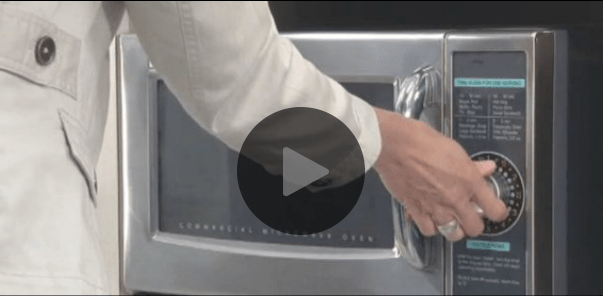There are a few places around the office you are going to want to make a mental note to clean more often. Or not to touch.

This year’s cold and flu season has been slow developing to be sure, but don’t let that lull you into a false sense of security, the flu is still coming. Instead, use the extra time to make sure your coworkers and your office are prepared. Read on to get up to speed on some best practice flu-prevention tips and tips on keeping the surfaces in your office clean and germ-free.
A little background
Did you know that germs on hands can be transferred up to seven times? Click To Tweet
Did you know that germs on hands can be transferred up to seven times, making all of those frequently touched surfaces in the office hot spots for viruses? A virus can spread through an entire office in just a few hours. Some germs can even live for days on hard surfaces, so hot spots like door handles, keyboards, light switches, desktops and elevator buttons should be cleaned even more often. And don’t forget about the kitchen. Breakrooms have some of the germiest surfaces in the entire office: sink faucets, microwave and refrigerator handles.
Kimberly Clark’s Dr. Kelly Arehart analyzed various high-touch surfaces commonly found in and around typical offices, and her findings are enough to convince anyone that more frequent cleaning and disinfecting should be a top priority.
Why is the office so full of germs?
Well, the obvious answer is because of your coworkers, but to get to the real answer, we need to dig a little deeper. Be warned, though, it’s even worse than you imagined. Your coworkers are gross (no offense). Before you rush to their defense, consider the results of a recent study of workplace hygiene practices, it uncovered the five grossest things your coworkers do around the office:
- Wiping runny nose on hands or sleeve
- Not covering mouth/nose when sneezing
- Not covering mouth when coughing
- Not washing hands frequently
- Leaving dirty tissues on desk
Unfortunately, many respondents commented on the overall lack of good hand hygiene at their workplace. Not only are these habits gross, they are guaranteed ways to spread germs.
The good news is you are not powerless to protect yourself. For example, a recent study revealed that using hand sanitizer not only kills germs on hands but also reduces germs on surfaces. When hands are clean, they’re less likely to transfer and spread germs to frequently touched surfaces in the office.
Why is this important? Because germs spread quicker than gossip.

We all know how fast a good rumor can make its way around the office, but according to some new research, those salacious tidbits have nothing on germs.
In fact, this research shows that germs spread around the office even quicker than previously thought, going from hands onto communal surfaces, and from there to your desk in the span of just a couple of hours.
In fact, you can spread your germs to other people more quickly by hand than you could by sneezing directly on them.
What’s the most contaminated place in the office?
Most people say the bathroom, but it is actually the aforementioned breakroom because it has so many spots that everyone touches: microwaves, sink faucets, cabinet handles, and coffee pots to name but a few.
These findings were part of a study that was presented recently at the American Society for Microbiology meeting in Washington, D.C. It showed that diseases spread best when people deposit germs on tables, desks, or coffee pots, and then others come along behind and pick them up:
“Every time you are touching these surfaces, you are picking up 30 to 50 percent of the organisms that are on those surfaces,” said Charles Gerba of the University of Arizona in Tucson at the meeting. “Then you touch your face, and the viruses can either get into the eyes nose or mouth, or get back onto your fingers. “The average adult touches their face on average once every three or four minutes,” Gerba said. For kids, it’s more on the order of every one minute.
Before you panic and run screaming from your office, you should know that the study also found that using disinfectant wipes and hand sanitizers almost completely cut the spread of germs.
When wipes and sanitizers were used, the viruses spread to 60 percent fewer surfaces and there was a 90 percent drop in the amount of virus on hands or surfaces.
“We suggested that any time they [meaning anyone] have been out in public, that they use a hand sanitizer and that they use a disinfectant wipe on their desk once a day,” Gerba said.
The findings could also apply to schools. Several states are reporting unusually high numbers of serious infections with a respiratory virus called enterovirus D-68 or EV-D68. The authors of the study estimate that absenteeism could be reduced by 50 percent if kids would just disinfect their desks once a day.
Why this matters: The Flu is expensive. Here’s how to avoid it.

I asked Rich Radil, our Coffee, Breakroom and Facilities product manager, how much the flu costs businesses each year and what they can do to protect themselves. Here’s what he said:
Considering how much the flu costs companies, and how relatively cheap and easy prevention is, it’s crazy that businesses aren’t better about protecting their employees, but they aren’t, I see it every day.
According to Rich, a Gallup Poll estimates that illnesses cost businesses $153 billion a year in lost productivity.


